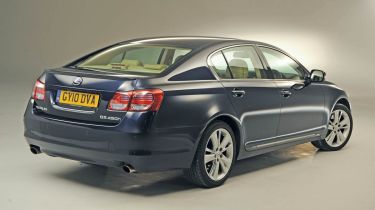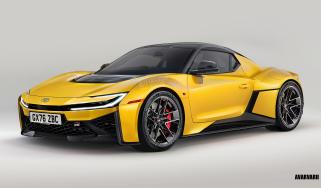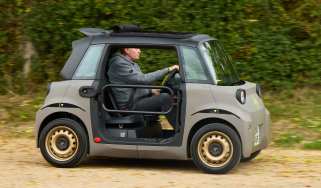Lexus GS450h
Cutting-edge hybrid technology promises more than it delivers
While Infiniti is just beginning to establish itself in the UK, Lexus has been a feature of the automotive landscape here for 20 years. The GS name dates from 1993, and thanks to conservative styling – which has changed little since the second-generation executive model was launched in 1997 – the car is a familiar sight.
The GS 450h was the world’s first rear-wheel-drive hybrid sports saloon, but its styling doesn’t reflect the futuristic technology lurking beneath the skin. While it’s less fussy than the Infiniti, the GS appears dated and uninspiring – a criticism that can also be levelled at the cabin.
The dashboard, in particular, looks old-fashioned. As with its rival here, the build quality is faultless, while the big buttons on the centre console and touchscreen monitor are easy to use. However, aside from the crystal blue backlit dials, it’s not very special from behind the wheel. The compromised driving position only adds to this feeling – you can’t adjust the seat low enough and rake adjustment on the wheel is at an acute angle.
Rear legroom is tighter than in the Infiniti, and the fact the batteries are stored behind the rear bench results in a short boot that is 120 litres smaller than its rival’s. The challenge of packaging the hybrid drivetrain also means the fuel tank is 15 litres smaller.
Used - available now

2023 Nissan
Juke
34,160 milesManualPetrol1.0L
Cash £13,850
2022 Peugeot
3008
26,454 milesAutomaticPetrol1.2L
Cash £19,792
2023 Vauxhall
Vivaro Life Electric
24,919 milesAutomaticElectric
Cash £17,495
2023 Peugeot
208
34,650 milesAutomaticPetrol1.2L
Cash £14,009Under the bonnet, the 292bhp 3.5-litre V6 petrol engine is boosted by an electric motor to give a total output of 341bhp. Consequently, at the test track, the Lexus sprinted from 0-60mph in exactly six seconds – that’s two seconds faster than the Infiniti – and was quicker to respond in kickdown. However, under hard acceleration, the CVT transmission keeps the revs high for long periods, which contrasts with the Infiniti diesel’s torquey refinement.
Around town, you get the benefit of silent zero-emissions driving, but anything other than very light throttle inputs will see the petrol engine cut back in. At cruising speeds, refinement is decent, although the suspension fails to iron out imperfections,and the ride is fidgety on all but the smoothest of surfaces.
The GS struggles in corners, too. Body control is poor and the slow steering is completely devoid of feedback. And as the brake pedal has an artificial feel, it’s hard to scrub off speed progressively, as the regenerative braking set-up is uneven in its resistance. Add these dynamic compromises to the lower kit tally, higher price and inferior economy, and the GS clearly has its work cut out to beat the Infiniti.
Details
Chart position: 2
WHY: With its petrol-electric drivetrain and CVT gearbox, the GS 450h is unique in this sector. We see if the SE-L version can attract buyers looking away from German marques.



